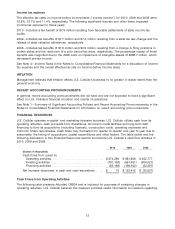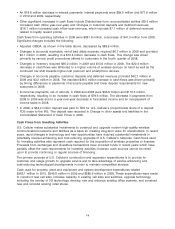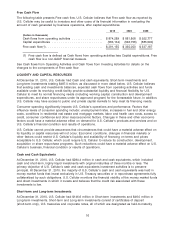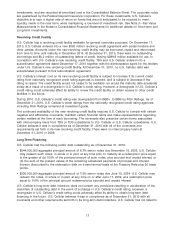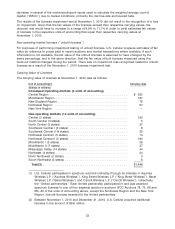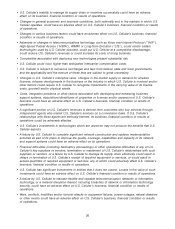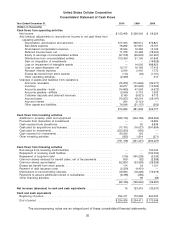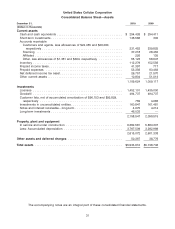US Cellular 2010 Annual Report Download - page 29
Download and view the complete annual report
Please find page 29 of the 2010 US Cellular annual report below. You can navigate through the pages in the report by either clicking on the pages listed below, or by using the keyword search tool below to find specific information within the annual report.
The carrying value of each U.S. Cellular reporting unit as of November 1, 2010 was as follows:
Reporting unit Carrying value
(Dollars in millions)
Central Region .......................................... $ 892
Mid-Atlantic Region ....................................... 716
New England Region ...................................... 224
New York Region ........................................ 137
Northwest Region ........................................ 318
Total ................................................. $2,287
As of November 1, 2010, the fair values of the reporting units exceeded their respective carrying values
by amounts ranging from 46% to 121% of the respective carrying values. Therefore, no impairment of
goodwill existed. Given that the fair values of the respective reporting units exceed their respective
carrying values, provided all other assumptions remained the same, the discount rate would have to
increase to a range of 14.4% to 19.8% to yield estimated fair values of reporting units that equal their
respective carrying values at November 1, 2010. Further, assuming all other assumptions remained the
same, the terminal growth rate assumptions would need to decrease to negative amounts, ranging from
negative 73.4% to negative 12.5%, to yield estimates of fair value equal to the carrying values of the
respective reporting units at November 1, 2010.
Licenses
U.S. Cellular tests licenses for impairment at the level of reporting referred to as a ‘‘unit of accounting.’’
For purposes of its impairment testing of licenses as of November 1, 2010 and 2009, U.S. Cellular
separated its FCC licenses into eighteen units of accounting based on geographic service areas.
Thirteen of these eighteen units of accounting represented geographic groupings of licenses which,
because they were not being utilized and, therefore, were not expected to generate cash flows from
operating activities in the foreseeable future, were considered separate units of accounting for purposes
of impairment testing.
Developed operating market licenses (‘‘built licenses’’)
As indicated in Note 1—Summary of Significant Accounting Policies and Recent Accounting
Pronouncements—Goodwill and Licenses Impairment Assessment, U.S. Cellular applies the build-out
method to estimate the fair values of built licenses. Significant assumptions within the build-out method
include the hypothetical build-out period, discount rate, long-term EBITDA margin, penetration rate,
revenue growth rate, and capital expenditure requirements. The penetration rate and capital expenditure
requirements varied among the different units of accounting and between years within the forecast
periods. The following key assumptions were applied consistently across all units of accounting for
purposes of the November 1, 2010 and 2009 licenses impairment assessment:
November 1, November, 1
Key assumptions 2010 2009
Build-out period ................................. 7 years 7 years
Discount rate ................................... 9.0% 10.0%
Long-term EBITDA margin ......................... 32.1% 32.7%
The discount rate used in the license valuation is less than the discount rate used in the valuation of
reporting units for purposes of goodwill impairment testing. That is because the discount rate used for
licenses does not include a company-specific risk premium as a wireless license would not be subject to
such risk.
The discount rate is the most significant assumption used in the build-out method. The discount rate is
estimated based on the overall risk-free interest rate adjusted for industry participant information, such as
a typical capital structure (i.e., debt-equity ratio), the after-tax cost of debt and the cost of equity. The
cost of equity takes into consideration the average risk specific to individual market participants. The
decrease in the discount rate between November 1, 2009 and November 1, 2010 was a result of the
21



